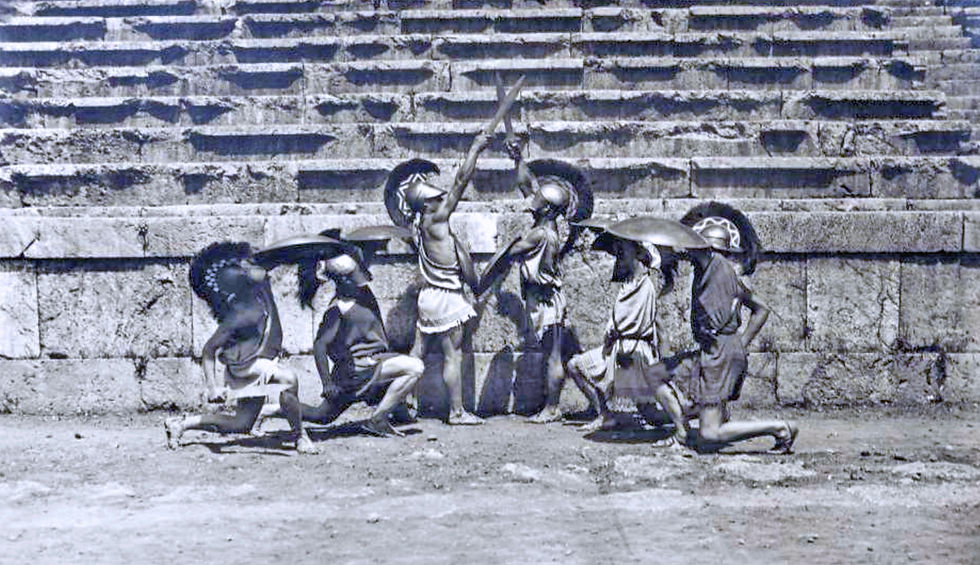A Celebration of Antiquity Reimagined: DELPHIC FESTIVALS
- Portes Magazine

- Nov 30, 2020
- 2 min read
Updated: Dec 13, 2020

Some 35 years after the Great Excavation of 1892 that unearthed Delphi’s treasures, two individuals with a passion for history and the arts set out to revive ancient ideals in an ever evolving 20th century. The brainchild of couple Eva Palmer and Angelos Sikelianos, the Delphic Festivals were a series of events held at the archaeological site of Delphi, commemorating ancient Hellenic culture and arts in a modern rendition which sought to bring to light the spirit of antiquity.
Inspired by ideals supporting tradition, unity and peace, the festivals, held in 1927 and 1930, included speeches, athletic competitions and drama performances, folk exhibitions and Byzantine music concerts, attracting politicians, scholars, actors, artists and other notable attendees from around the world.
The couple built a house near the ancient site, which served as a base to work on the various details that went into the celebrations including planning, costume-making and script-writing. The former Sikelianos residence today houses the Delphic Festivals Museum.
A project that exhausted the couple’s inheritance and savings, eventually leading them to separation, the Delphic Festivals played a significant role in promoting Hellenistic ideals in Europe and beyond.
The first Delphic Festival, a two-day affair held May 9th -10th, 1927, began with a welcoming and tour of the sacred site of Delphi, along with a walk-through of the Archaeological Museum of Delphi. The program then continued with breakfast and musical performances by locals. The afternoon portion held at the ancient theater included a chorus-led hymn to Apollo, a theatrical performance of Prometheus Bound and a presentation by Angelos Sikelianos. After dinner, those visiting by boat were escorted to the nearby waterfront village of Itea.
The second day commenced with a visit to an artisan fair highlighting handcrafted folk and loom art. Having taken on weaving herself, Eva Palmer Sikelianos spoke about the importance of traditional craft. A speech was then given by a famous German archaeologist, and was followed by athletic games, including the ancient sports of the long jump, hoplite run, discus, run, javelin and more, at the ancient stadium. Draped in ancient costume including spears, shields and helmets, teenage athletes from Athens and Thessaloniki performed a phyrric war dance by Thanos Veloudios, to music by Constantinos Psachos After dinner was served, the attendees enjoyed Byzantine music and final theatrical performances including the Septiria, an ancient ritual reenacting the mythical slaying of Python by Apollo. The Delphic Festivals concluded with a a torch relay along the Sacred Way, leading visitors to Itea.
Internationally acclaimed photographer Elli Sougioutzoglou Seraidari, known as Nelly’s, photographed the second Delphic Festivals of 1930. Her collection includes iconic black and white snapshots of bodies in motion and stunning nudes emulating ancient statues. A young photographer who went on to capture images of local Greek life and the likes of Stavros Niarchos and Aristotle Onassis, her work for the Delphic Festivals adorned postcards commemorating this great event.

_____________________________
WORDS: Portes Magazine
PHOTOS: The Hellenic Literary and Historical Archive of the National Bank of Greece Cultural Foundation (ELIA/MIET) | Portes Magazine | Museum of Delphic Festivals Collection







